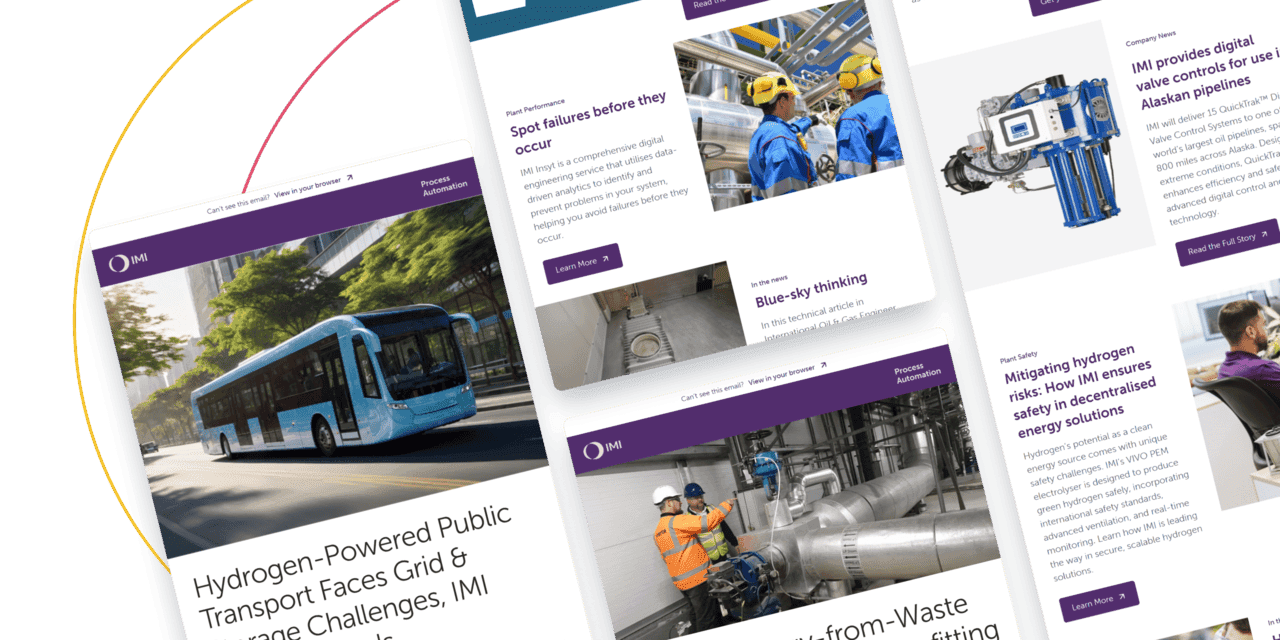Organization Sectors
Organization Sectors
Stay up to date on all the latest Process Automation news
© 2025 IMI plc, All Rights Reserved
© 2025 IMI plc, All Rights Reserved

BLOG

Written By Ali Zandieh Shirazi
August 30, 2024
The latter process is preferred because it generates greater volumes of high-octane-rating gasoline and other valuable by-products. However, fluid catalytic cracking (FCC) is also hazardous without due care, especially during turnarounds when the risk of flash fire and injury is particularly high.
In recent months, IMI has examined this area closely with customers, developing a breakthrough engineering solution that minimises turnaround risk and drastically reduces the time it takes to bring a refinery back online.
Here’s the full story.
Why isolation is non-negotiable It’s critical to isolate a refinery’s reactor and main column during a shutdown procedure. If this is not done correctly, flammable hydrocarbons will flow into the air side of the FCC unit, creating highly volatile conditions.
But this is not the only concern.
Until recently, isolation of the reactor and main column meant removing a large ring – typically between 40” and 85” in diameter – and installing a plated blind. This blinding location can be found at the reactor overhead vapour inlet to the main column. When this is parted, personnel are exposed to a rich stream of hydrocarbons at 300°F. Site staff work in high-temperature proximity suits and under fresh air for protection.
It’s difficult and dangerous work, but also essential for keeping an FCC unit working optimally. Planned turnarounds are necessary for routine maintenance and upgrades across all heavy industries. Without these periods, plants would fall into disrepair and run a much higher risk of downtime, not to mention create much lower-quality yields. Reactors must also be isolated from the main column to deliver sufficient heat to controllably raise the reactor/regen temperature.
Isolation failure caused a major explosion at the Torrance refinery in California in February 2018. Maintenance preparations inadvertently caused a pressure deviation, allowing hydrocarbons to backflow and ignite in the site’s electrostatic precipitator. The result was an explosion so large it registered a magnitude 1.7 tremor.
Rethinking the disconnect Through ongoing consultation with site managers across the world, it became clear that a new approach with easier actuation would offer considerable advantages.
During the design phase, IMI’s principal concern was safety. First, it eliminated conditions that could lead to an incident similar to the one seen at the Torrance site. Second, it minimised engineers’ contact with streams of high-temperature hydrocarbons.
However, improving this procedure also had a commercial advantage in the form of effective isolation, which reduces risk and speeds up turnarounds. Quicker shutdowns mean quicker maintenance, allowing customers to recommence production in a shorter space of time. Reducing this window – and ensuring it’s the only downtime that occurs – is critical for running a profitable facility.
The outcome of this design and consultation process has been IMI’s Fractionator Inlet Valve, which allows refineries to run an on/off service.

Breakthrough engineering in action In the open position, the valve body passage forms a straight tube, so solid particles can pass through without contacting any other part of the fitting. In this position – and when closed – the seat surfaces of the valve body are completely covered.
The upper section of the goggle plate is also equipped with two separate discs in an internal wedge-ball-arrangement. This means one valve will provide a positive/tight shut-off in the closed position.
It’s also designed to withstand the extreme conditions common to all refineries. The discs, for example, can be released from their seats without the risk of jamming due to high-temperature changes because the internal wedges form a non-self-locking shape.
To initiate the opening movement, two wedge pieces are withdrawn until their upper faces sit against the stops. The pressure of the process fluid releases the upstream disc from its seat, so no physical intervention by engineers is required.
Striking the balance This valve’s quick actuation has been transformative and has cut customers’ turnaround times by 36 hours. Upon FCC unit startup, the blind – if required – can also be removed while the reactor and main column are being headed up. The valve will remain in the closed position while manway torquing is completed, and system temperatures are increased. This yields a time saving of 12 hours when compared with current methods.
Safety measures often, and rightly, come at the expense of speed. But with this particular valve, IMI engineers have struck the balance, creating a much safer solution that also delivers distinct commercial benefits.
This project typifies IMI’s collaborative approach to product development, targeting areas where novel engineering can deliver for customers on several fronts.
Stay up to date on all the latest news and articles from IMI.

Stay up to date on all the latest news and articles from IMI.


Stay up to date on all the latest news and articles from IMI.
